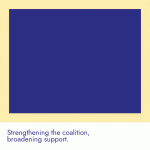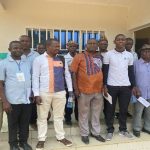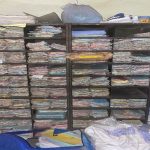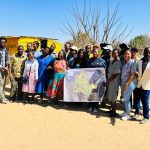The Strategy Session on Youth and Land was held on Tuesday 25th March in Washington D.C., USA, as part of the World Bank Annual Conference on Land and Poverty, established a reference group for advancing the Youth and Land agenda.
 The Session was hosted jointly by the International Federation of Surveyors (FIG), the Global Land Tool Network (GLTN) and UN-Habitat Youth & Livelihoods Unit. Speakers at this event represented a broad spectrum of youth representatives and GLTN partners, including the FIG, ActionAid International, Habitat for Humanity, Slum/Shack Dwellers International, the International Fund for Agricultural Development (IFAD) and the Norwegian University of Life Sciences (UMB).
The Session was hosted jointly by the International Federation of Surveyors (FIG), the Global Land Tool Network (GLTN) and UN-Habitat Youth & Livelihoods Unit. Speakers at this event represented a broad spectrum of youth representatives and GLTN partners, including the FIG, ActionAid International, Habitat for Humanity, Slum/Shack Dwellers International, the International Fund for Agricultural Development (IFAD) and the Norwegian University of Life Sciences (UMB).
Speakers identified a variety of existing projects and work that targeted youth and land. These spanned from the FIG training of youth champions for the Social Tenure Domain Model, IFAD’s work on youth access to credit and finance, and youth-led social enterprise Spatial Collective’s Mtaa Safi initiative (meaning “clean neighbourhood”) targeting waste in informal settlements through community action.
Eva-Maria Unger, representing the International Federation of Surveyors (FIG) Young Surveyors Network (YSN) spoke to the role of young professionals in creating youth-responsiveness. She suggested that young professionals have a unique position in the land sector, aided through technology, and are best equipped to link grassroots communities with professionals and governments.
Representing the Nairobi-based social enterprise, “Spatial Collective”, Primoz Kovacic spoke about his experiences with youth-led community mapping projects in Nairobi, Kenya. Mtaa Safi (meaning “clean neighbourhood”) is one ongoing initiative that targets waste in informal settlements through community action. Primoz cites this project as evidence that local, community ownership of projects produces best results – and a “fear of missing out” has particularly resulted in youth participation as part of this project. His experiences highlight the need to document and promote successful youth and land initiatives – and this has been one of the aims of the Youth-led Action Research on Land project (see more details at http://www.gltn.net/index.php/land-tools/cross-cutting-issues/youth ).
Steven Jonckheere followed as the third speaker, from the International Fund for Agricultural Development (IFAD). He spoke about IFAD projects that specifically promoted youth access to land, through enabling credit and finance. He cited inheritance, young women’s rights and access to leasehold tenure as particular areas needing research and emphasis. Alongside the final speaker, PhD candidate and STDM youth champion Jamal Browne, he emphasized the need to develop youth awareness and education across land issues.
The session concluded with an extended discussion by attendees. The need for clearer and common messaging featured heavily. It was suggested that talking about the “where” and “what” of youth and land – that is, where are the places that youth particularly need access to land and what are the tenure options that will best enable youth access to land and security of tenure. These should also be discussed in terms of the function that land has for youth, and particularly across the needs of rural and urban youth, across both formal and informal tenure regimes.
Three key points were identified in the session:
- There is a need for awareness-raising, promotion and scaling of the activities of young professionals, youth activists and youth entrepreneurs
- Youth access to land is both about the use of physical spaces (including public space, land for shelter and livelihoods) and access to decision making spaces
- Youth must be recognized as a heterogeneous group, and voices across this group must be heard and recognized
The Reference Group will continue the discussion to define clear goals and messages to promote the voice of youth in the land sector. At the end of the meeting, key events to advocate on youth and land were identified: including the future World Bank Land & Poverty Conferences, Habitat III and events associated with the post-2015 Sustainable Development Goals.
The next steps for this group are to link more closely to the Youth led Action Research on Land project, with a writing workshop on Youth Land Tools planned for July.
Additional inputs should be forwarded to UN-Habitat and GLTN via:
Kate Fairlie, kate.fairlie@unhabitat.org
Toril Iren Pedersen, toril.iren@unhabitat.org






